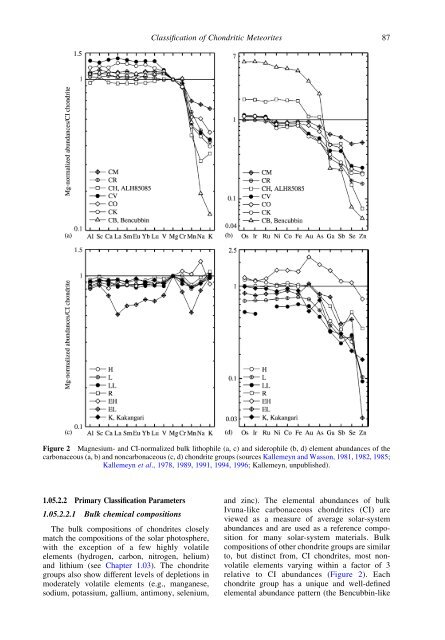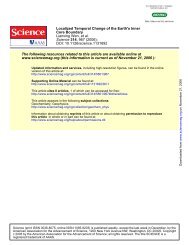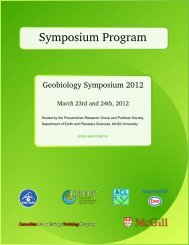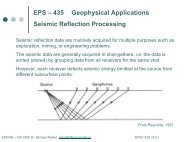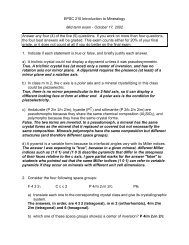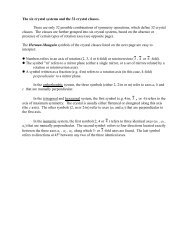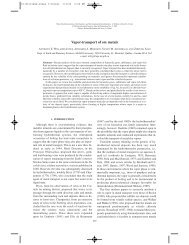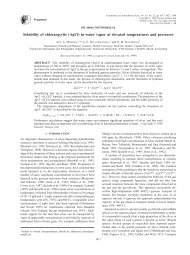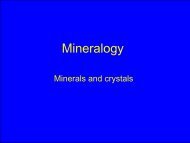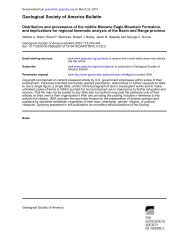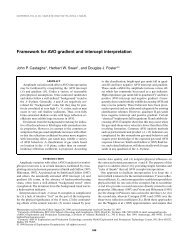05 Classification of.. - Department of Earth and Planetary Sciences
05 Classification of.. - Department of Earth and Planetary Sciences
05 Classification of.. - Department of Earth and Planetary Sciences
You also want an ePaper? Increase the reach of your titles
YUMPU automatically turns print PDFs into web optimized ePapers that Google loves.
<strong>Classification</strong> <strong>of</strong> Chondritic Meteorites 87<br />
Figure 2 Magnesium- <strong>and</strong> CI-normalized bulk lithophile (a, c) <strong>and</strong> siderophile (b, d) element abundances <strong>of</strong> the<br />
carbonaceous (a, b) <strong>and</strong> noncarbonaceous (c, d) chondrite groups (sources Kallemeyn <strong>and</strong> Wasson, 1981, 1982, 1985;<br />
Kallemeyn et al., 1978, 1989, 1991, 1994, 1996; Kallemeyn, unpublished).<br />
1.<strong>05</strong>.2.2 Primary <strong>Classification</strong> Parameters<br />
1.<strong>05</strong>.2.2.1 Bulk chemical compositions<br />
The bulk compositions <strong>of</strong> chondrites closely<br />
match the compositions <strong>of</strong> the solar photosphere,<br />
with the exception <strong>of</strong> a few highly volatile<br />
elements (hydrogen, carbon, nitrogen, helium)<br />
<strong>and</strong> lithium (see Chapter 1.03). The chondrite<br />
groups also show different levels <strong>of</strong> depletions in<br />
moderately volatile elements (e.g., manganese,<br />
sodium, potassium, gallium, antimony, selenium,<br />
<strong>and</strong> zinc). The elemental abundances <strong>of</strong> bulk<br />
Ivuna-like carbonaceous chondrites (CI) are<br />
viewed as a measure <strong>of</strong> average solar-system<br />
abundances <strong>and</strong> are used as a reference composition<br />
for many solar-system materials. Bulk<br />
compositions <strong>of</strong> other chondrite groups are similar<br />
to, but distinct from, CI chondrites, most nonvolatile<br />
elements varying within a factor <strong>of</strong> 3<br />
relative to CI abundances (Figure 2). Each<br />
chondrite group has a unique <strong>and</strong> well-defined<br />
elemental abundance pattern (the Bencubbin-like


